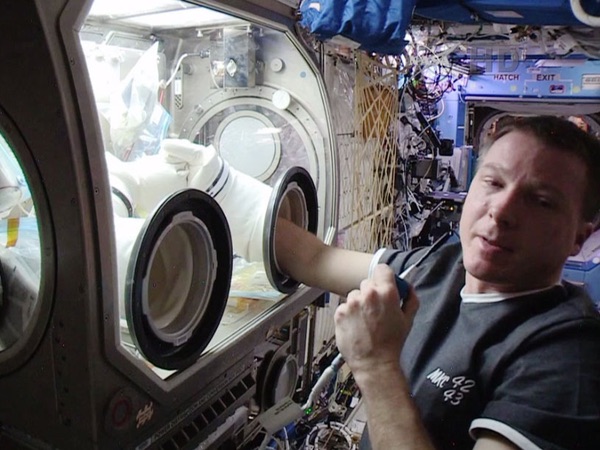Discoveries or inventions: the case for industrial property in spaceby Kamil Muzyka
|
| But the case of space-based patents is far more complicated. For example, do we treat the outer space and zero-g environment as natural in this context? |
A scientific discovery in legal terms is physical phenomena or process that occurs naturally under certain circumstances. As opposed to an invention, a discovery hasn’t been artificially created by an inventor. An invention, however, can harness or artificially recreate such phenomena, and thus, such an invention can be patented.
But the case of space-based patents is far more complicated. For example, do we treat the outer space and zero-g environment as natural in this context? The low or zero gravity environments can be viewed as natural, though it is difficult to say that they are natural environments for an organism aboard a spaceship or a manufacturing space station.
In legal terms, the invention is described as “any new and useful art, process, machine, manufacture, or composition of matter, or any new and useful improvement in any art, process machine, manufacture, or composition of matter.” But is getting a plant to a zero-g environment a process? Although both plants and zero-g environments are present in the universe, especially on Earth and in the solar system, there are no natural plants living in outer space. And if we treat the changes occurring in vegetation, fungi, and other living organisms placed in this kind of environment as merely a discovery, what could be then treated as an invention?
If, for example, someone discovered that in certain environments there is a particular process occurring that wasn’t foreseen prior to the placement procedure, what could be patented: the process, the method of artificially reproducing the process, the product of the process? In the case of European patent law, which differs from its US counterpart, an invention would be the application of the effect, or method of altering the effect, but not the effect itself.
This, however, is based on the assumption that the effect of placing a living organism in an organism in certain non-native environments will be treated as a discovery. Discoveries are not regarded as inventions in European patent law. However, one could follow the path of the WIPO patent filings WO2001023595A2, titled “Reduced gravity transformation process and product,” and WO2009137135A2, titled “On-orbit procedures for adapting plants and animals to hostile environments,” and treat the process of placement itself as an invention.
In this case, from the European standpoint, one could apply for a patent for the method of placing and organism in the non-native environment, with alterable artificial gravity, as well as any products of such procedure, for the organism has been artificially placed in an non-native environment, and as with artificially placing altered genes into an organism, such procedure also falls under the category of biotech patents.
In Diamond v. Chakrabarty, the United States Supreme Court held that living matter is patentable if it is created by man. The Court explained that a genetically engineered bacterium is not a natural phenomenon but a non-naturally occurring product of human ingenuity. In AMP v. Myriad Genetics, the Court was again asked to draw a line between discovery and invention and ruled that isolated genomic DNA (gDNA) is not patentable but complementary DNA (cDNA) is. The Court reasoned that genomic DNA, consisting of exons and introns, is a product of nature that has been merely isolated from a living organism by removal and separation from its natural environment. A strand of cDNA, on the other hand, is synthetically created and contains the same exons found in natural DNA but lacks introns.
The issue of non-biotech inventions is much simpler in this case, for there is no perquisite for isolating the organism from the environment and applying changes to it. However, they still require a degree of inventive step and non-obviousness. The method of producing space-manufactured materials that gain certain quality or properties that couldn’t been achieved in any terrestrial environment is also subject to patent, as would be a variation of a screw conveyor designed to transport ore drilled from an asteroid to the ships cargo hold in asteroid mining.
| Artificially transporting an organism to a low-gravity or weightless environment, or creating such environment, as well as the novel, non-obvious product of such procedures can all be viewed as subjectable matter for patents. |
The only problem with space-based materials would be the question of occurrence in a “natural environment.” One can patent certain novel alloys and polymers that came to being only by the means of artificial creation. While still theoretical, the metallic hydrogen that scientists believe exists under certain pressures and temperatures within gas giants like Jupiter or Saturn cannot be patented. Yet, the methods of applying metastable metallic hydrogen to fue lcells or artificial means of producing it are surely subject to patents.
The same analogy could be drawn for existing organic compounds or any supposed microbial extraterrestial life, if any such would have been found. One might not patent an extraterrestrial microbe. However, isolated gene sequences that could be transferred to terrestrial organisms for them to gain certain new abilities or properties, or the means of applying the traits of such organisms in improving any branch of industry, like waste scrubbing or geoengineering, can be viewed as subjectable matter.
In conclusion, the issue of scientific discovery and genuine invention lies on the matter of artificial creation. Thus, artificially transporting an organism to a low-gravity or weightless environment, or creating such environment, as well as the novel, non-obvious product of such procedures can all be viewed as subjectable matter for patents. One might not apply for a patent for an existing substance or organism, but only on its inventive application or an artificially modified variety.
